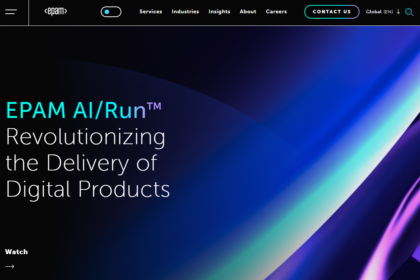Hydrogen is gaining traction as a clean and efficient energy carrier with broad applications across sectors like transportation, manufacturing, and power generation. With its high energy density and zero carbon emissions at the point of use, hydrogen offers a compelling alternative to fossil fuels. Yet its adoption is accompanied by serious safety considerations. Hydrogen is odorless, colorless, and highly flammable, which makes reliable detection critical in environments where leaks could lead to fires, explosions, or infrastructure damage. Modern hydrogen sensor technology addresses these risks with increasing precision, adaptability, and robustness. This guide explores the evolution of hydrogen sensors, their operational importance, the innovations driving their advancement, and their integration into modern systems.
Safety and Performance in Industrial and Commercial Environments
In facilities where hydrogen is used or stored, the accuracy and responsiveness of gas detection technology have a direct impact on operational safety. Sensors must function under varying pressures, temperatures, and humidity levels, often in the presence of other gases that could interfere with readings. Technologies like H2scan deliver real-time hydrogen detection with high selectivity, making them suitable for environments where fast leak identification is required to maintain uninterrupted service and avoid dangerous incidents. By identifying trace amounts of hydrogen early, these systems reduce downtime, protect workers, and preserve infrastructure without relying on complex calibration routines.
Detection Mechanisms and Sensor Materials
Hydrogen sensors operate using a range of principles, each with its strengths. Electrochemical sensors detect gas through chemical reactions that generate electrical signals. Metal-oxide semiconductors change their resistance when exposed to hydrogen, providing a measurable output. Palladium-based sensors absorb hydrogen into their structure, causing a physical change that can be monitored. Optical sensors use changes in light properties to identify hydrogen presence. The choice of detection mechanism often hinges on the operating conditions and required response time. Material selection is just as critical; palladium, tungsten oxide, and carbon nanotubes are often used for their ability to interact selectively with hydrogen. Advanced manufacturing techniques have improved sensor stability and lowered detection thresholds, making them suitable for more sensitive or high-risk applications.
Integration with Smart Systems and IoT Platforms
Hydrogen sensors are no longer standalone components. Many now come embedded with communication protocols that allow them to be part of broader monitoring frameworks. Integration with smart grids, predictive maintenance systems, and Internet of Things (IoT) platforms means that hydrogen levels can be tracked remotely and continuously. Data can be analyzed in real-time to identify patterns or anomalies, allowing technicians to respond proactively rather than reactively. Cloud connectivity adds another layer, offering centralized control and easier diagnostics. In transportation sectors, including fuel cell vehicles and refueling stations, this interconnectedness allows for real-time alerts and centralized oversight, reinforcing both safety and efficiency.
Durability and Reliability in Harsh Environments
Harsh conditions, such as those found in refineries, aerospace facilities, or submarines, demand sensors that can function reliably over long periods. Temperature fluctuations, moisture, and exposure to contaminants can degrade sensor performance. Recent developments in encapsulation materials, protective coatings, and self-diagnosing electronics have addressed many of these concerns. Modern sensors are often built to military or industrial-grade standards, with robust housings that resist corrosion and physical damage. Durability is measured not just in physical resistance but also in long-term signal stability and low maintenance requirements. In environments where human access is limited or dangerous, sensor lifespan and reliability are paramount.
Calibration, Maintenance, and Operational Costs
Routine calibration ensures that hydrogen sensors provide accurate readings over time, but frequent servicing can disrupt operations and raise costs. Many advanced sensors are now designed to self-calibrate or require minimal intervention, which reduces downtime and labor expenses. Some systems are even capable of reporting their performance metrics, signaling when recalibration or replacement is needed. The shift toward maintenance-free or low-maintenance models is particularly valuable in settings like offshore platforms or underground fuel pipelines, where accessibility is limited. Selecting a sensor with minimal drift and a long operational life directly impacts overall cost-effectiveness and reliability.
Applications Across Sectors and Future Outlook
Hydrogen sensors have moved far beyond lab environments. They are now used in power plants, automotive applications, aerospace systems, and even portable electronic devices. In hydrogen fuel cell vehicles, sensors monitor both the storage tanks and exhaust streams to prevent leaks and optimize performance. In power generation, especially with growing interest in green hydrogen, sensors help track production efficiency and detect leaks in electrolyzers or storage units. Ongoing research is pushing for even smaller, more sensitive, and more energy-efficient designs, some powered by nanomaterials or capable of being embedded into flexible surfaces. As demand for hydrogen grows, sensors will play a larger role in shaping how safely and effectively this energy source is adopted at scale.
Advanced hydrogen sensor technology is a critical enabler of the hydrogen economy. These sensors support safety, operational efficiency, and technological integration across a growing array of industries. Their development reflects an ongoing pursuit of accuracy, durability, and adaptability, ensuring that hydrogen can be harnessed without compromising human safety or system performance. As industries continue to invest in hydrogen infrastructure, the importance of reliable, real-time gas detection will only increase. The next generation of sensors will not just detect gas—they’ll be embedded in intelligent networks that redefine how we interact with and manage clean energy systems.











